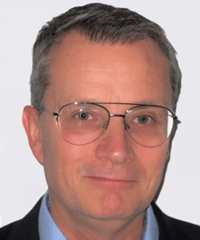Requirements for energy efficiency and smart solutions make present-day and future construction projects more complicated, and it is becoming increasingly important that all property systems can communicate with one another. An easier way to ensure a smooth and efficient final installation is to invest in a coordinated system solution.
Many advantages of having fewer suppliers
Partnering in major construction projects has become increasingly popular. This leads to the use of fewer suppliers of products and services, but also requires the parties involved to take on more responsibilities. The many advantages of having fewer suppliers include less coordination work and administration, more efficient use of energy and better quality of the final solutions. It also increases project transparency, which leads to a higher level of trust between the parties. This facilitates coordination and results in optimal system solutions.
Smart Readiness Indicator
Another advantage of investing in more comprehensive system solutions is that it is easier to make the building adaptable to future requirements and change. One good example of this is the Smart Readiness Indicator (SRI) which is a rating scheme based on the EU Energy Performance of Buildings Directive (EPBD). The SRI score is expressed as a percentage between 0 and 100 and indicates the preparedness of a building to integrate smart technologies.
It is important to have solutions that can communicate with each other to meet high standards of quality and safety
The SRI assesses the building’s readiness in three main categories: energy efficiency and total performance, how the building can be adapted to the users’ requirements, and how it can be adapted to external signals. In practice, the SRI score depends greatly on how well the systems in the building (e.g. electricity, ventilation, heating, cooling, surveillance, charging and control systems) can communicate with one another. This can be simplified by using fewer suppliers that can take on a larger part of the project and thus the responsibility for the installations and the final system solution together with their installation engineers. It will become increasingly necessary to have standardised, tried and tested solutions that can communicate with each other in order to meet high standards for quality and functional safety, and at the same time be cost-effective at every stage of the project.
The Blåa Huset building project in Malmö
The Blåa Huset building in Lockarp near Malmö in southern Sweden is one example of a real estate project in which Swegon was responsible for supplying a large system solution. Construction of the office and warehouse, which have a combined area of 2000 sqm, was completed in 2021. The challenges were to keep energy consumption to a minimum, choose sustainable construction materials and provide long-term solutions, while guaranteeing an optimal indoor climate.
The client chose to work with an end-to-end supplier of indoor climate solutions to ensure the best possible results. Swegon was chosen as a single supplier of products and services for the indoor climate and has been a partner all the way from the early planning stage, through the installation and commissioning phases to project completion. The solution that Swegon delivered comprised Swegon Parasol combined beams for heating, cooling and ventilation with its WISE control platform, BlueBox Zeta Sky reversible heat pump for heating and cooling, Swegon GOLD ventilation unit, and digital services including apps for tenants and information screens in public spaces. Monitoring the system after go-live was also included as one of Swegon’s commitments.
Keeping to one supplier has ensured a high level of quality
The client says that keeping to one supplier has ensured a high level of quality across all the solutions. For instance, ventilation is fully demand-controlled and a temperature optimisation function between the ventilation, cooling and heating systems has made it possible to reduce energy consumption by more than 10 per cent. The tenants are also able to set the temperature in their office and conference rooms via an app on their phone. Information about the indoor climate is continuously displayed for the tenants to see on the screens in the lunch rooms and entrances to the building. The procedure has also resulted in an efficient and smooth workflow throughout the project, with good coordination, effective time management, fewer sources of error, and fewer complaints and reports of problems with the indoor climate from the tenants, as they can easily see the status, which means operational staff have fewer unnecessary reports of issues to deal with.
A lot of time and expense can be saved
The conclusion is that with fewer suppliers that are prepared to assume more responsibilities, it is possible to achieve cost savings in many phases of the project. A lot of time and expense is saved during the construction, installation and commissioning phase because there is less coordination work and administration. Costs are saved during the operation and management phase (the lifecycle) because operation of the entire system for heating and cooling production and ventilation is optimised. Last, but not least, cost savings are also achieved by having a quality assured indoor climate that is visualised for the tenants via apps and screens. This helps prevent unnecessary reporting of problems and incorrect technical measures that waste energy.

























.jpg?width=75&name=Image%20(5).jpg)








.jpg?width=75&name=magnus%20andersson_550x550%20(1).jpg)











.jpg?width=75&name=0%20(1).jpg)





-4.png?width=75&name=MicrosoftTeams-image%20(3)-4.png)















